If you plan to paint your home, you might wonder which paint finishes to use. Two popular options are satin and flat paint. Both finishes have advantages and disadvantages and they differ in several ways.
Satin paint has a slight sheen, which gives it a more reflective quality than flat paint. Satin paint is also more durable than flat paint, which can withstand more wear and tear. On the other hand, flat paint has no shine at all, which gives it a more matte appearance.
Read on to understand the importance of paint choice and how to make the right paint decision for your home!
When it comes to painting your walls, choosing the right finish can make a big difference in the appearance and durability of the paint job. Two popular finishes are satin and flat, each with unique characteristics and benefits.
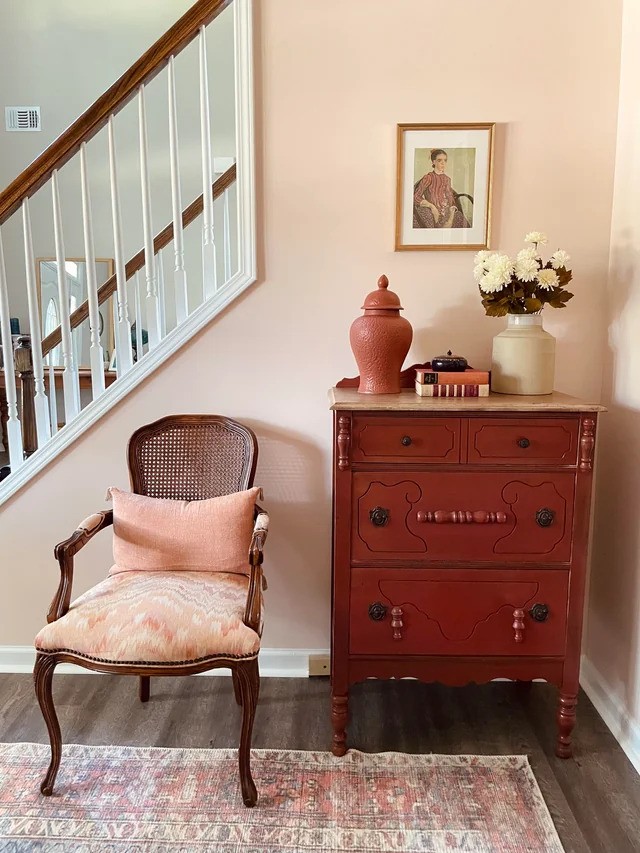
Here are some properties of Satin finish paint:
Some benefits of satin paint include:
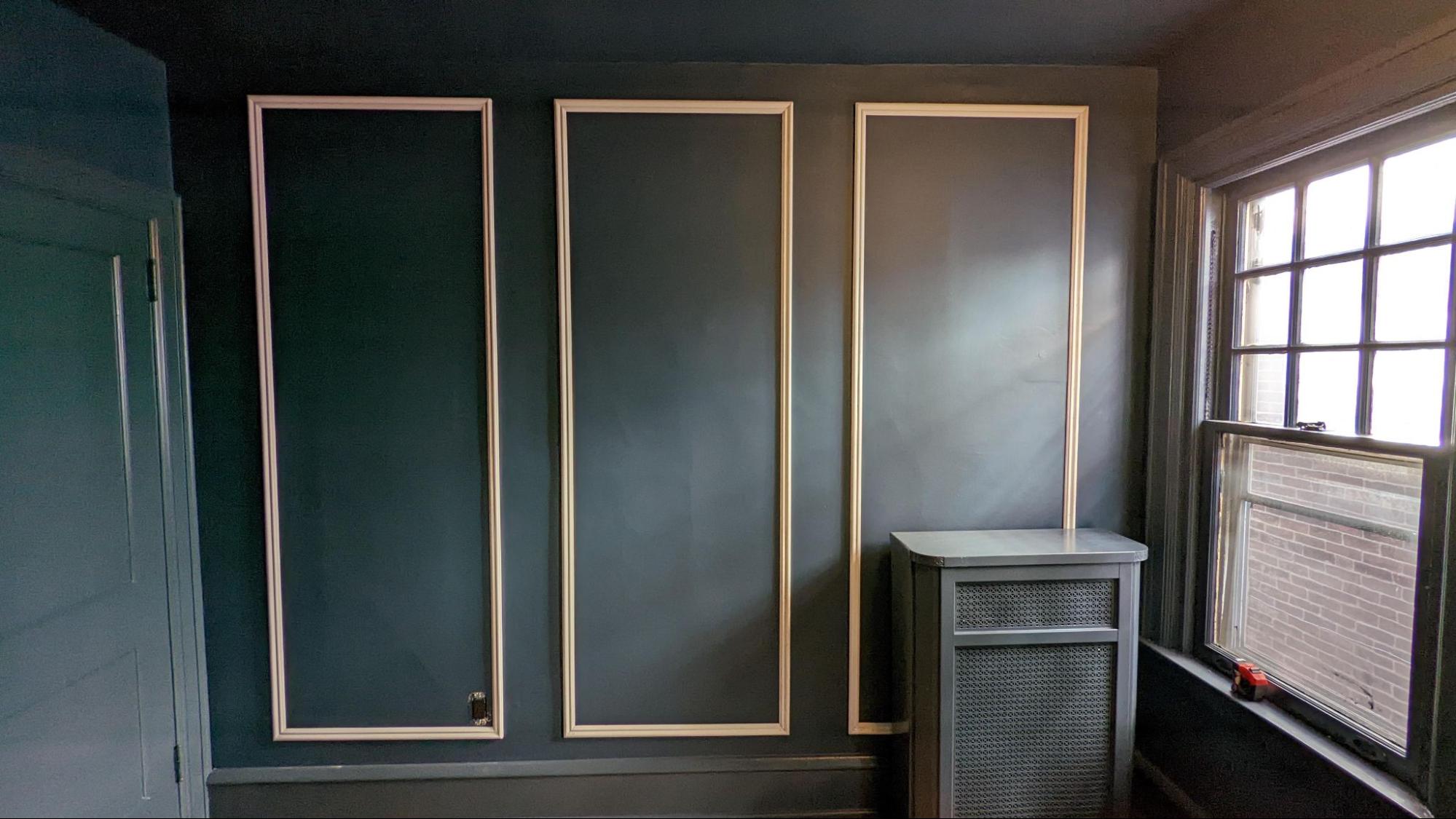
Some characteristics of Flat paint, also known as matte finish, are that it has a non-reflective surface that absorbs light rather than reflecting it. This makes it a good choice for walls with imperfections, as it can help to hide them.
Flat paint is often used on ceilings and walls in low-traffic areas such as bedrooms and dining rooms.
One of the benefits of flat paint is that it is easy to touch up. However drawbacks of flat paint can be that it is:
When choosing between satin and flat paint, consider the look you want to achieve and the level of durability you need:
When it comes to choosing between satin and flat paint, durability is an important factor to consider. High-traffic areas such as hallways, entryways, and kitchens require a more durable paint finish that can withstand wear and tear.
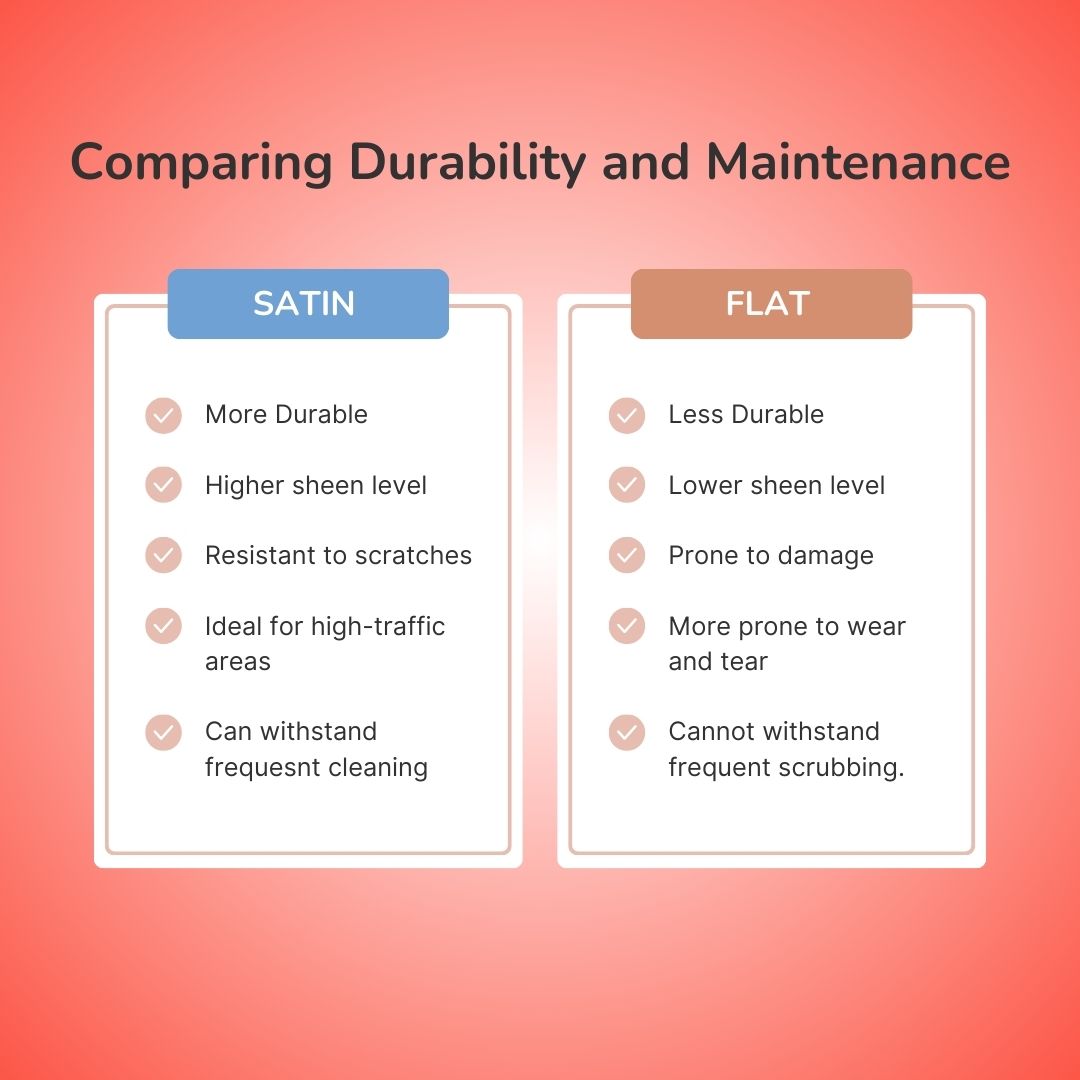
Satin paint is more durable than flat paint. It has a higher sheen level and contains more binders, making it more resistant to scratches, scuffs, and stains.
Satin paint is ideal for high-traffic areas because it can withstand frequent cleaning and scrubbing without losing its sheen or color.
On the other hand, flat paint is less durable than satin paint. It has a lower sheen level and fewer binders, making it more susceptible to damage from scrubbing and cleaning. Flat paint is more prone to wear and tear and can show signs of mildew in humid environments.
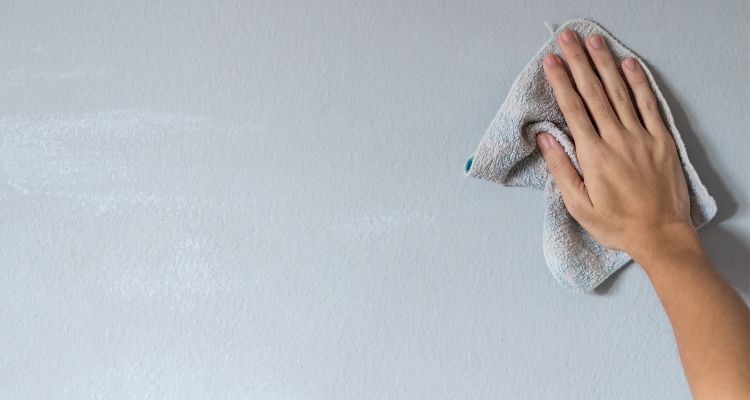
When considering cleaning and maintenance it is important to note that satin paint is easier to clean than flat paint.
Satin paint can be wiped clean with a damp cloth or sponge, making it an ideal choice for areas prone to spills and stains. Satin paint is also more resistant to mildew and moisture, making it an excellent choice for bathrooms and kitchens.
Flat paint, on the other hand, is more challenging to clean than satin paint. It is more prone to damage from scrubbing and cleaning and can lose its color and sheen if not cleaned properly. Flat paint is not recommended for high-moisture areas or areas prone to spills and stains.
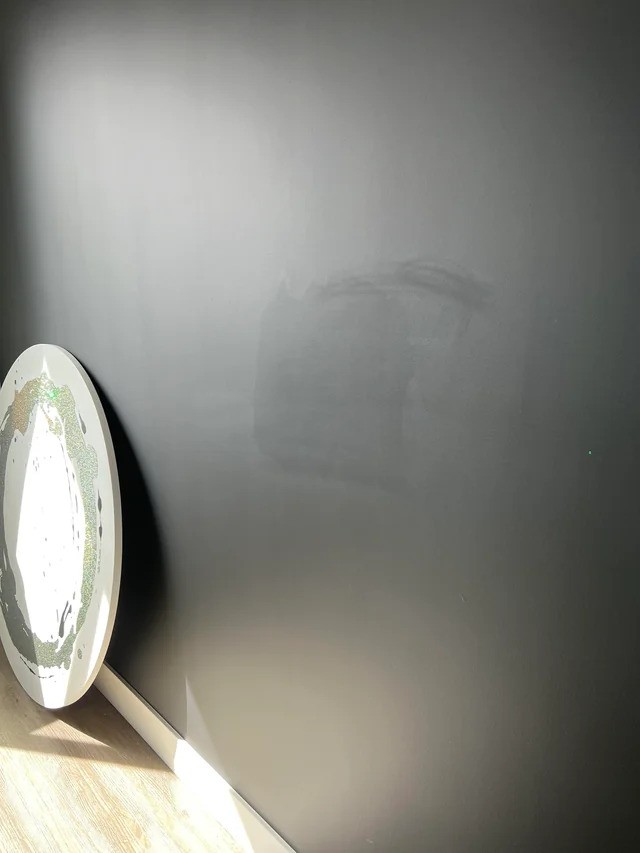
Therefore when making considerations of paint choice it is essential to consider the durability and maintenance requirements of the area you will be painting.
Satin paint is more durable and easier to clean than flat paint, making it an ideal choice for high-traffic areas and areas prone to spills and stains. However, flat paint may be a better choice for low-traffic areas that require a more subtle finish.
When it comes to choosing between satin and flat paint, the aesthetic differences are important to consider. Here are some factors that can help in room specific paint selection:
Satin paint has a low sheen, which gives it a slightly reflective surface. This makes it a good choice for rooms that receive a lot of natural light, such as kitchens, living rooms, and hallways.
Satin paint can also be a good choice for bathrooms, as it is more resistant to moisture than flat paint.
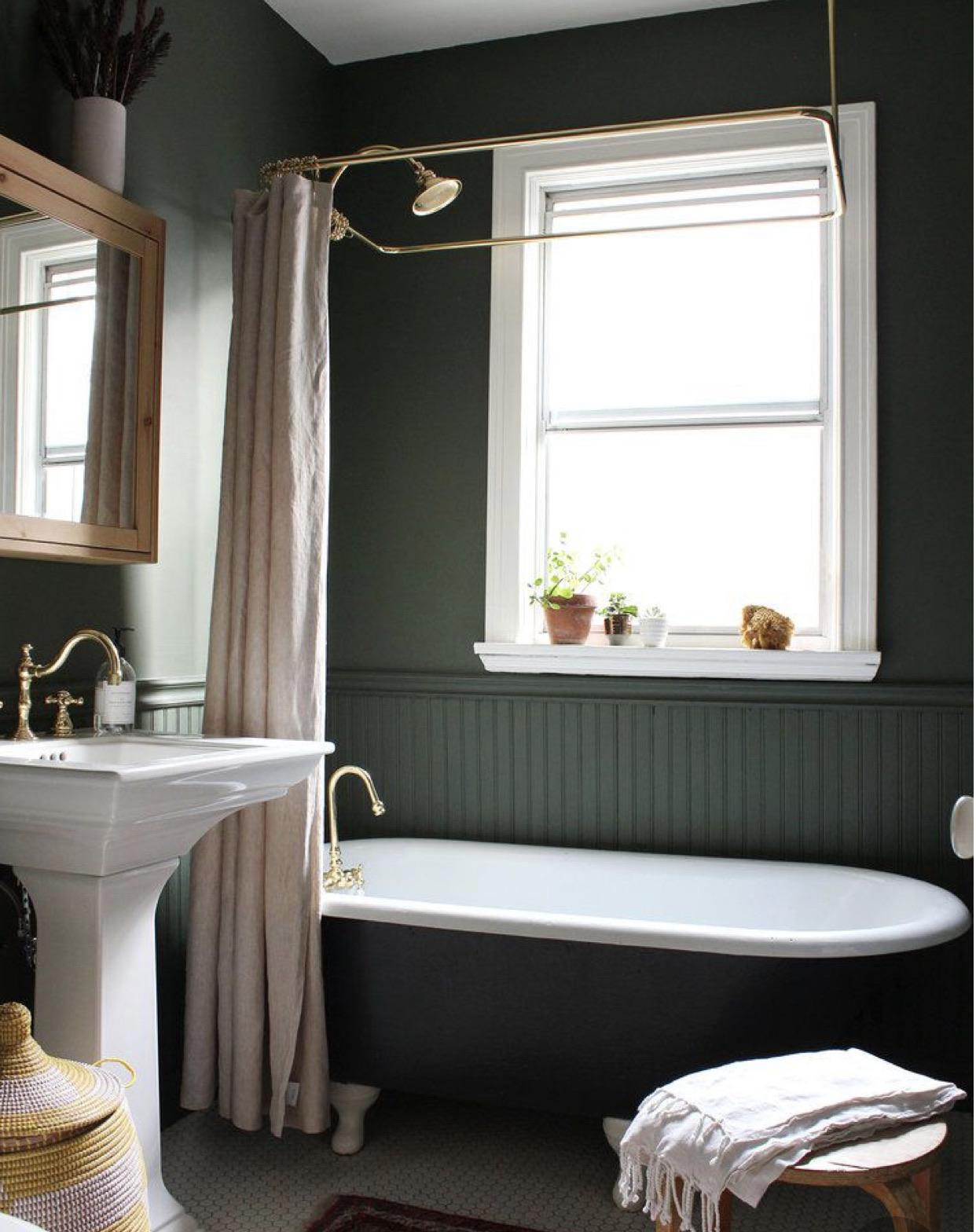
Flat paint, on the other hand, has a matte look and does not reflect light. This makes it ideal for bedrooms, where you want a cozy and relaxing atmosphere.
Flat paint can also be a good choice for ceilings and trim, as it does not draw attention to these areas.
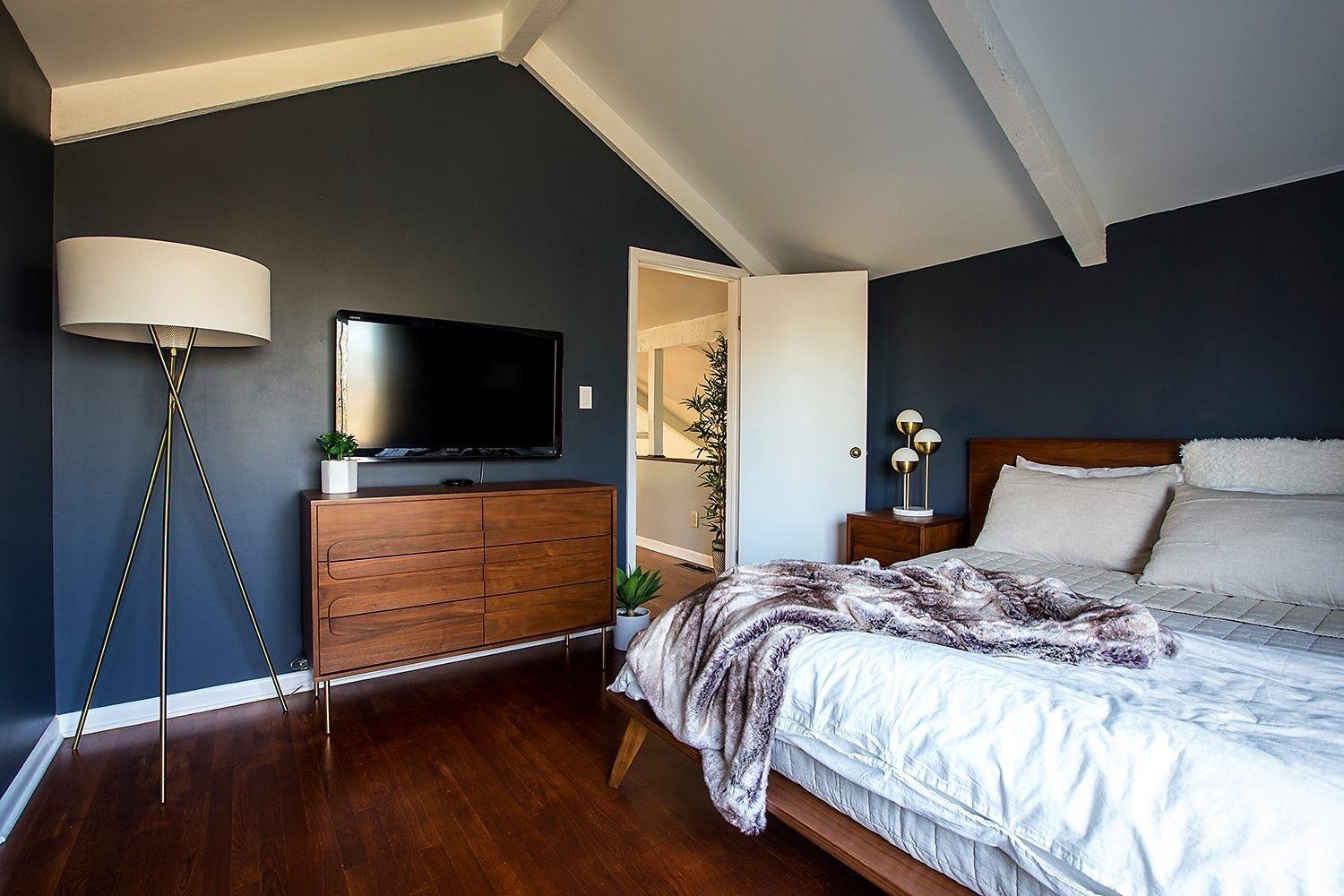
The impact of room lighting and color on satin and flat paint can also influence your decision. Satin paint can make colors appear slightly brighter, while flat paint can make colors appear slightly darker.
This means that if you want to make a small room appear larger, you might want to use satin paint and light colors. If you want to make a large room feel cozier, you might want to use flat paint and darker colors.
When choosing between satin and flat paint, it is important to consider the aesthetics of each room in your home. Satin paint is a good choice for rooms that receive a lot of natural light, while flat paint is ideal for creating a cozy atmosphere in bedrooms.
The impact of light and color can also influence your decision. By considering these factors, you can choose the right type of paint for each room in your home.
When it comes to painting your home, choosing between satin and flat paint is only half the battle. The other half is making sure the paint is applied correctly to ensure a beautiful and long-lasting finish.
Here are some practical considerations to keep in mind during the application process.
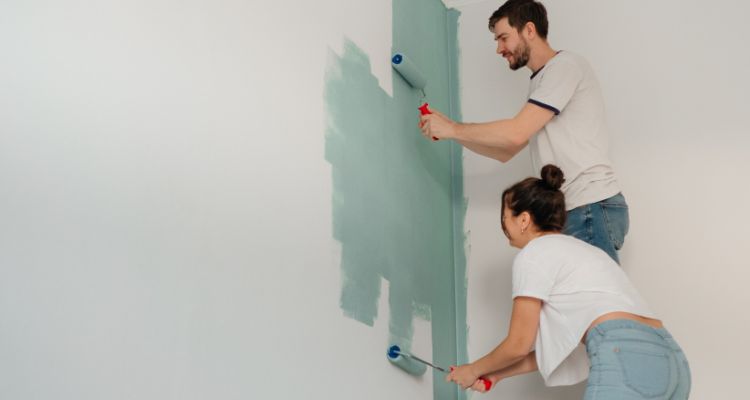
The tools and techniques you use to apply your paint will have a significant impact on the final result.
For both satin and flat paint, a roller is the best tool to use for the largest areas, as it provides the most even coverage. When it comes to smaller areas or edges, a brush may be necessary to ensure full coverage.
To achieve the best results, it is recommended that you apply the paint in thin, even coats. This will help to prevent drips and ensure that the paint dries evenly.
When applying the paint, be sure to use long, even strokes, and avoid going back over an area that has already started to dry.
Another crucial aspect of painting is surface preparation. Before applying any paint, cleaning the surface thoroughly to remove any dirt, dust, or debris is essential.
If the surface has imperfections, such as cracks or holes, these should be filled and sanded smooth before painting.
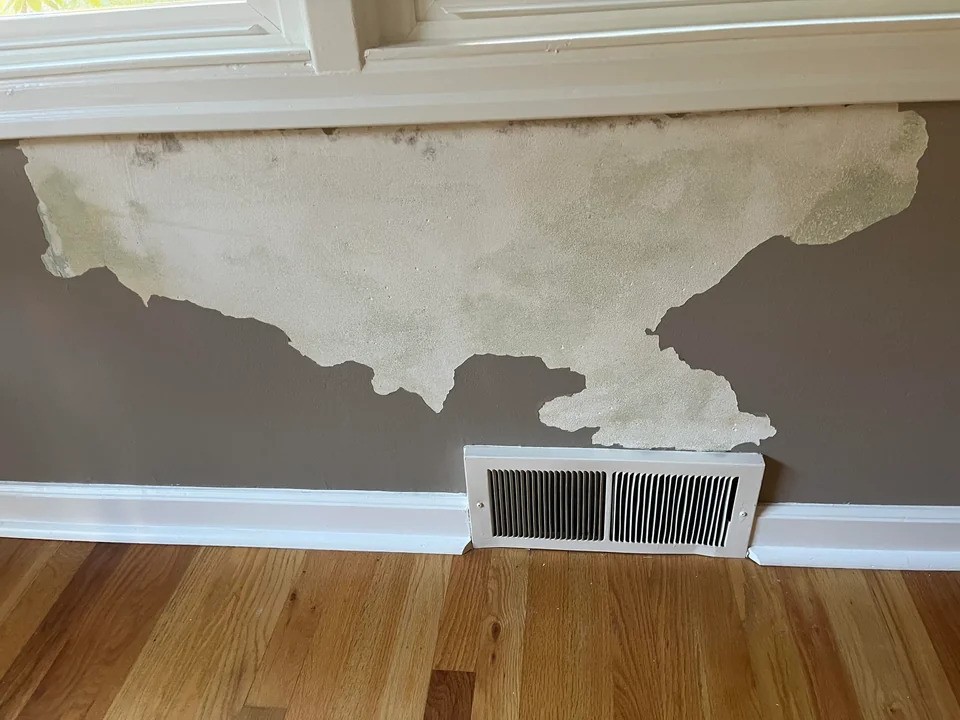
In addition to surface preparation, using a primer before applying your paint is also important. A primer will help to ensure that the paint adheres properly to the surface and provides better coverage.
When choosing a primer, be sure to select one that is compatible with your paint type (latex or oil-based).
By taking the time to properly prepare your surface and use the right tools and techniques, you can ensure that your paint job looks great and lasts for years to come.
While the labor and costs associated with painting can be significant, the investment is well worth considering the impact a fresh coat of paint can have on your home's appearance.
When it comes to choosing between satin and flat paint, there are several factors to consider. Both finishes have their advantages and disadvantages, and the best option for you will depend on your specific needs and preferences.
In this section, we will take a closer look at the advantages and disadvantages of satin and flat paint, as well as their best use cases and recommendations.
Here are some advantages and disadvantages of Satin paint:
Advantages for Satin paint:
Disadvantages of Satin paint:
Advantages of Flat paint:
Disadvantages of Flat paint:
When it comes to choosing between satin and flat paint, there are several best use cases and recommendations to keep in mind.
Satin paint is best for areas that require a fresh coat of paint, such as interior walls and accent walls. It is also a good choice for high-traffic areas, such as hallways and entryways, as well as hardworking rooms, such as kitchens and bathrooms.
Flat paint, on the other hand, is best for low-traffic areas, such as bedrooms and dining rooms. It is also a good choice for walls with imperfections, as it can help to hide them.
However, it is important to keep in mind that flat paint may not stand up well to scrubbing, so it is not recommended for areas that require frequent cleaning.
To summarize, both satin and flat paint have their advantages and disadvantages, and the best option for you will depend on your specific needs and preferences. When choosing between the two, consider:
By keeping these factors in mind, you can choose the best finish for your walls.